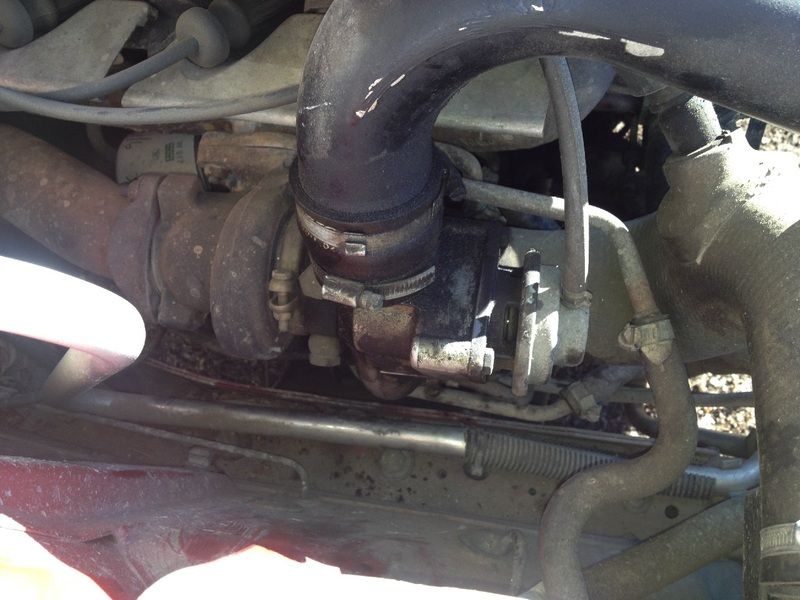How can the wastegate actuator be tested on a Mitsubishi TD04 turbo? Stock on a '93 940 with the integral CBV mounted vertically (same as below except for the CBV).
Problem is that the turbo won't pressurize up. It happened after I replaced the seal and gasket on the drain pipe on the turbo, which I removed/replaced the wastegate actuator rod from the wastegate shaft to access the pipe bolts. Didn't adjust the rod, just removed/replaced it.
Engine drives fine (no smoke, has power - no turbo power). Turbo gauge doesn't pass the mid-point, but show vacuum as it would normally through driving conditions.
So far checked-
-The wastegate shaft moves freely (the actuator arm is on the engine side of the shaft - I don't think it's possible for me to have put it on wrong -it's same as pictured below)
-The actuator valve holds vacuum
-Took off the hose from the wastegate actuator to turbo housing. The car drove the same (no turbo power). (replaced hose with new)
-Took off the hose from the air filter housing to front of the turbo housing. The turbine spins freely, there is some play in the shaft.
-Checked the CBV - opens easily with vacuum applied.
-Checked vacuum ports to see if they were plugged as I removed hoses as I went through them. All were not plugged.

So since I only messed with the actuator valve before I started having the no pressure problem, I would like to test the actuator valve. Do I need to apply vacuum or pressure to the valve to get it to move the wastegate? How much vacuum/pressure is needed to get it to move the wastegate (I don't want to damage it if it's not the problem)?
Problem is that the turbo won't pressurize up. It happened after I replaced the seal and gasket on the drain pipe on the turbo, which I removed/replaced the wastegate actuator rod from the wastegate shaft to access the pipe bolts. Didn't adjust the rod, just removed/replaced it.
Engine drives fine (no smoke, has power - no turbo power). Turbo gauge doesn't pass the mid-point, but show vacuum as it would normally through driving conditions.
So far checked-
-The wastegate shaft moves freely (the actuator arm is on the engine side of the shaft - I don't think it's possible for me to have put it on wrong -it's same as pictured below)
-The actuator valve holds vacuum
-Took off the hose from the wastegate actuator to turbo housing. The car drove the same (no turbo power). (replaced hose with new)
-Took off the hose from the air filter housing to front of the turbo housing. The turbine spins freely, there is some play in the shaft.
-Checked the CBV - opens easily with vacuum applied.
-Checked vacuum ports to see if they were plugged as I removed hoses as I went through them. All were not plugged.

So since I only messed with the actuator valve before I started having the no pressure problem, I would like to test the actuator valve. Do I need to apply vacuum or pressure to the valve to get it to move the wastegate? How much vacuum/pressure is needed to get it to move the wastegate (I don't want to damage it if it's not the problem)?

